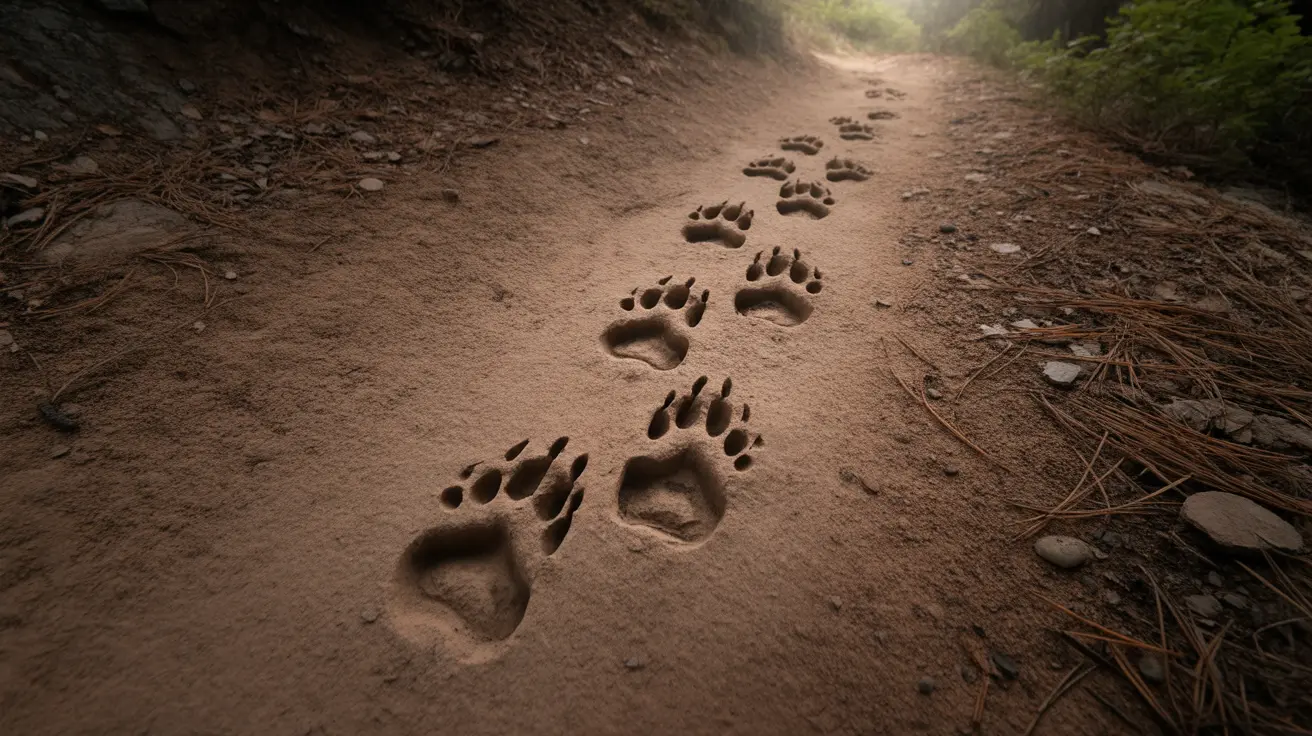Embarking on Idaho's scenic trails requires more than just a sense of adventure – it demands a thorough understanding of Idaho wildlife safety, especially when hiking with pets. As encounters with wild animals become increasingly common, knowing which animal tracks warrant immediate caution can mean the difference between a memorable outdoor experience and a dangerous situation.
For pet parents exploring Idaho's wilderness, recognizing potentially dangerous animal signs is crucial for protecting both themselves and their four-legged companions. While the state's diverse wildlife contributes to its natural beauty, certain tracks should signal an immediate change in your hiking plans.
Understanding Common Predator Tracks
Bear Tracks Identification
Black bears and grizzlies both call Idaho home, making bear track identification essential. Bear prints typically show five toes and visible claw marks. Grizzly tracks are generally larger than black bear prints, often measuring 10-12 inches in length, while black bear tracks usually range from 7-9 inches.
Mountain Lion Safety Tips
Mountain lion tracks resemble large cat prints, typically 3-4 inches wide, showing four toes without claw marks. Unlike dog or wolf tracks, cat prints rarely show claw impressions because their claws are retractable. When hiking with pets, these tracks deserve particular attention as mountain lions may view smaller animals as prey.
Wolf Tracks Idaho
Wolf tracks can be distinguished from large dog prints by their more oval shape and tighter clustering of toe pads. Typically measuring 4-5 inches in length, wolf tracks often appear in a straight line, unlike the meandering pattern of dog tracks.
Protecting Pets from Predators
Trail Safety Measures
- Keep pets leashed at all times
- Avoid hiking at dawn and dusk when predators are most active
- Make noise while hiking to avoid surprising wildlife
- Carry bear spray and know how to use it
- Stay alert and watch for fresh tracks or droppings
Safe Camping in Bear Country
When camping with pets in Idaho's wilderness, proper food storage becomes crucial. Use bear-resistant containers and store pet food with human supplies. Never keep pet food in your tent, and clean up any spills immediately to avoid attracting wildlife.
Frequently Asked Questions
How can I tell the difference between black bear and grizzly bear tracks?
Grizzly bear tracks are notably larger (10-12 inches) and show more prominent claw marks with greater space between the toes and claws. Black bear tracks are smaller (7-9 inches) with closer-set claw marks to the toe prints.
What should I do if I encounter a mountain lion while hiking with my pet?
Keep your pet close and leashed. Make yourself appear large, make noise, and never run. Back away slowly while maintaining eye contact. If attacked, fight back aggressively.
How can I protect my pet from coyote attacks while hiking?
Keep pets leashed and close, avoid hiking during dawn and dusk hours, carry deterrent spray, and make noise while hiking. If you encounter coyotes, gather your pet close, make yourself appear large, and make loud noises to discourage approach.
Staying Safe in Idaho's Wilderness
Understanding and respecting wildlife signs is fundamental to safe outdoor recreation in Idaho. While encountering animal tracks can be exciting, knowing which ones signal potential danger helps ensure both you and your pets return safely from every adventure.
Remember that while these precautions may seem extensive, they're essential for safely sharing the trail with Idaho's wild residents. By staying informed and prepared, you can enjoy the state's natural beauty while keeping yourself and your pets safe from wildlife encounters.






